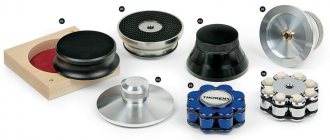“Pop music is never primitive” - Lady Gaga
Save and read later -
Pop music is the most difficult genre to define. For the avoidance of doubt (and in an attempt to better understand what a real pop song is), let's listen to the voices of several commercially successful musicians, singers and songwriters.
Frank Zappa once said, “I think pop music has done more for oral sex than anything else in the world—and vice versa.” A profound thought from the creator of a group called “Mothers of Invention.”
John Lennon reasoned: “I love pop music. It’s not easy to write a good pop song,” and Manfred Mann stated: “Pop music is perhaps the only art form that depends entirely on success with the general public. The more people buy a record, the more successful it is, both commercially and artistically.”
Thus, pop music becomes part of the people's life; these are enjoyable and often not at all easy to write songs that have achieved significant commercial success.
But what about the eternal grumbling that pop music is inferior art, sugarcoated, watered down, and ultimately fabricated rather than created?
According to Peter Tork, “pop music is aspirin, and the blues are vitamins.” Prince added, “What's missing from pop music is danger,” and Bono summed it up this way: “Pop often says everything's okay, while rock says it's not at all, but you have the power to change it.”
Perhaps our favorite quote came from Nina Persson, lead singer of the Cardigans, who said, “Pop music is hard to define. I would suggest looking at good music and bad music. Good music is good regardless of its genre."
Historically, jazz, blues, rhythm and blues, gospel and folk were the ancestors of pop music, but electronica, dance pop music, rock, metal and hip-hop are just some of its branches. Of course, it is worth remembering that good often contributes to popularity, but popular is not always so. Understanding contemporary social tensions (and providing immediate relief from the pain they generate) is undoubtedly a positive aspect of pop music. We, of course, agree with Johnny Rotten, who said: “Pop music has always been my favorite.”
Now that we've got those definitions out of the way, let's move on to the big question: Which songs from pop music's vast and varied heritage should you choose to test your speakers with? (It's about time, you're probably thinking). We have selected the 20 best, in our opinion, tracks and explained why they will give even the most talented speakers a blast. Our collection spans the genre's 45-year history, so you don't have to worry about overdosing on eighties synthpop and jangle.
Read, make your suggestions, and switch to your favorite streaming services to listen to the songs we've selected.
ABBA – Money, Money, Money (1976)
ABBA – Money, Money, Money
Just the low voice of Anni-Frid Lyngstad will give the midrange speakers of your speakers an extremely meticulous test, but there is also a furious tempo, sharp changes in tonality and modulation.
Inspired by the musical Cabaret, ABBA's iconic song is all about lush low registers, a relentless disco beat and unusually insistent hammered keyboard chords in the upper range. This is a luxurious musical feast - if you have the appropriate system. Still saving up for such a system? We understand you. I dream about how I could get a rich husband...
Can – Spoon (to check the rhythm)
Drummer Jaki Liebezeit sets up a tricky cage for his bandmates to work with, and the result is a surprisingly thorough test of your speakers' ability to combine a devilishly unconventional and disparate collection of instrumental strings into a compelling and cohesive whole...
Around 2:23 comes a volley of fills and pads that will be hard for your speakers to handle, rhythmically, on their own. Gurgling bass phrases, guitar strumming and keyboard explosions are also included, adding to the confusion...
Rolling Stones – Gimme Shelter (1969)
Rolling Stones – Gimme Shelter
In some publications, Merry Clayton's name was mistakenly written as "Mary" - her duet with Mick Jagger on this composition is so good that we have repeatedly included it in our various lists, preferring it to other Rolling Stones songs.
According to Jagger, this collaboration was quite accidental: they called Clayton in the middle of the night to record the song “as it happens.” Merry showed up to the studio "with curlers" and completed her task in a few takes (in the form of lines such as "Rape, murder! Just a shot away!"), which Mick called "naturally stunning."
About three minutes into the song, Clayton sings the chorus alone. In the last tense trill, her voice breaks. If the speakers do you any favors (when listening to the un-remastered version), you might hear Jagger's surprised reaction somewhere between "Hmm" and "Oh".
Clayton performed her otherworldly spells while pregnant. Unfortunately, she suffered a miscarriage shortly after, which some attribute to the physical strain of this recording process.
In 1970, Merry Clayton recorded her own version of the song, which became the title track of her debut solo album, released the same year - also a highly recommended listen.
Bob Marley and the Wailers - Turn Your Lights Down Low (for a sense of space)
Bob Marley takes much of the credit for bringing reggae to a global audience. But Island Records' insistence on high-gloss sound quality made this traditionally gritty genre more accessible. “Turn Your Lights Down Low” demonstrates this perfectly: a spacious recording in which each instrument is anchored in its own area of the soundstage... Just space...
Speakers must describe the position of each player on stage and, most importantly, the space between them, so that the slow simmer and intensity of the melody have full impact. Not many songs use space as a tool as effectively as this one.
Prince – When Doves Cry (1984)
Prince – When Doves Cry
From the opening guitar solo, the Linn LM-1 drum machine, and the looping guttural vocals (which should start in the left channel and slowly work their way into the right), this song in all its aspects serves as a serious test of the clarity of sound and the quality of the speaker's stereo imaging.
Prince wrote it after all the other tracks for the Purple Rain album were finished, and saved the best for last. He not only sang the song, but also played every instrument - but there was a catch. Keyboardist Matt Fink admitted in 2014 that the baroque synthesizer solo at the end was recorded by Prince at half speed and then sped up into the mix. Fink, of course, was given the task of learning to perform it live at the same speed as on the album - and he coped with it perfectly.
For eighties pop, the song is uncharacteristically laconic in its expression: it has no bass line, so be wary of speakers that try to convince you otherwise. Prince said that this line was originally in the recording, but he thought it made the song sound too ordinary, so he threw it out. Genius, what can I say.
Larry Heard - What About This Love? (1989)
With these deep synthesized bass lines, warm piano sounds and soft enveloping vocals we are transported from Detroit to Chicago. Larry Heard's classic dance compositions could be the subject of a separate article, and his influence on the acoustic side of house music remains significant today. Perhaps thanks to his jazz and soul roots, his works are much more complex than conventional dance tracks; Many intricate modulations will not let your system relax for a moment.
Sia – Chandelier (2014)
Sia – Chandelier
Regular readers may remember that the video for Sia's solo version of Elastic Heart was included in What Hi-Fi?'s list of the best music videos of all time. Both it and the composition itself are undoubtedly the best representatives of the singer’s sixth studio album, 1000 Forms of Fear.
The song begins with a short reggae intro (sung in a mezzo-soprano style), followed by a multi-layered electropop opus, marked by extensive production work and built on the melancholic theme of self-destruction through parties and libations.
Look at your columns like a couple of pastry chefs; To fully realize the perfection of this composition's recipe, they will require artistry on an art level. We are absolutely delighted.
Britney Spears – Toxic (2003)
Britney Spears – Toxic
Britney Spears, what's wrong with that? Fun fact: The song "Toxic" was originally proposed to Kylie Minogue for her ninth album, Body Language, but she turned it down. Yes, we also think that she still bites her elbows.
By far the best single from Britney's fourth studio album, In the Zone, came from producers Christian Carlsson and Pontus Winnberg (collectively known as Bloodshy & Avant). Dance-pop beats, drums, synths, surf guitar and bhangra elements, topped with Spears' signature breathiness, are a litmus test for the quality of your tweeter matching and overall treble.
Another fun fact: the high-pitched bhangra-style string sounds were taken from the 1981 Hindi classic Tere Mere Beech Mein by Lata Mangeshkar and S.P. Balasubrahmanyam. Listen closely and you will recognize them.
Chemical Brothers - Das Spiegel (to test attack and decay)
You'll be hard pressed to find a more extensive, truncated, and completely abridged collection of electronically produced sounds... That's why Das Spiegel is a great test of your speakers' discipline when it comes to attack and decay. Aside from the drumming rhythm guitar and blown melodics, every sound here seemed designed to appear out of nowhere and then disappear just as suddenly...
From the tetrahedral sweep of the drum pattern to the squeaks, hisses and creaks in the background as the melody builds, control must be military. And the droning, almost continuous bass only makes the ordeal worse.
Michael Jackson – Billie Jean (1983)
Michael Jackson – Billie Jean
Raise your hands if you didn't know that in this photo Jackson is actually posing with a live tiger cub - and that a cropped version of this photo became the cover of Thriller, the best-selling album of all time.
As for the song itself, the key to it (after two bars of drums) is the opening bass line. Quincy Jones was not thrilled with the heavy lows and 29-second intro, feeling that it made the song too weak to be included on the album—a strong reminder that producers can make mistakes, too. Are your speakers capable of carrying this iconic melody without getting fat along the way?
Legend has it that the song was so good that when the lyrics came to Jackson's mind, he was driving - and so engrossed in it that he didn't notice his car was on fire until an attentive motorcyclist alerted him to it.
Radiohead - The national anthem (to check the overall balance)
Radiohead's "The national anthem" is a dense, multi-tiered musical cake, with acoustic and electronic instruments firing in all directions (not to mention a brass ensemble that seems to be in the wrong place). Everything is dialed up to eleven: from the processing of Thom Yorke's vocals and the distorted sound of the bass guitar to the howling of the theremin in the background...
The speakers must strike the perfect balance between organization and attack, between dynamism and poise and, most importantly, between control and refusal across the entire frequency range... When done correctly, it's simply a breathtaking cacophony.
Beyonce – Single Ladies (Put a Ring on It) (2008)
Beyonce – Single Ladies (Put a Ring on It)
Thanks to Beyonce's stunning vocals, the phrase about not wearing a ring sounded in almost every home, but the highly original work of producers Terius "The-Dream" Nash and Christopher "Tricky" Stewart contributed greatly to this.
In addition to the influence of heavy dancehall and bounce, as well as changes in time signature from 3/4 to 4/4, the song's musical canvas includes constant claps, Morse code signals, a rising whistle, an energetic bass drum, fade-in and fade-out synths - and even noises that cause associations with a children's playground.
Presenting all this is an extremely difficult task for speakers, but if yours can pay due attention to each individual part, you will not be able to resist the charm of the composition. Otherwise, the output will be a tightly packed cacophony. Never underestimate the power of producers.
Journey – Don't Stop Believin' (1981)
Journey – Don't Stop Believin'
There are many reasons to include this composition on the list, but we will limit ourselves to three. First, while most pop songs have a refrain repeated several times in a traditional song structure, the true chorus of Don't Stop Believin', as well as the first mention of those words, is held back until the last 50 seconds of the track. So Steve Perry basically sings the verses. The right speakers will allow you to confidently hear the texture of every phrase, including the famous C-sharp belting in the line “in the night” - close to breakdown, but at the same time triumphant.
Secondly, at the 00:54 mark, a guitar solo by Neal Schon (who played for Carlos Santana before founding Journey) begins, leaving no doubt about who the true frontman of the group is.
And finally, one cannot help but note the fact that such a place as South Detroit does not exist in nature. Talking about the creation of the song's lyrics, Steve Perry recalled: “I tried to use North Detroit, East and West in the lyrics, but they didn’t fit the line. And Yuzhny stood up like a glove. I loved the sound of those words, and only later did I find out that this was actually Canada.”
Preface - warning
The first part of the disc, where we listened to classical music, can be called “harmony of sound.” And then there will be a second part, which can be called “test signals”, since that is what they are, unlike musical works.
Let us repeat that track number 7 is a specially created pause that lasts only 25 seconds and will allow you to reduce the volume level to almost minimum. The eighth track will be quite loud compared to the previous ones. So as not to get scared and prevent the acoustics from “starting up”, turn the volume level down.
Listening to test signals, unpleasant overtones from the case and speakers may emerge. You may hear “humps and dips” in the frequency response. You can simply learn a lot of new things about your equipment (acoustics) that you had not noticed before. It is likely that these “bad” moments will not be heard by the owners of premium speaker systems, but there will not be many of them. For most music lovers, these tests are a help, but for some they are a frustration.
Think about whether it makes sense to listen, test, and then be upset by what you find out - your system is not perfect and is doing “something wrong.” You weren't going to listen to test signals all the time. The acoustics and all the equipment were selected by you in order to listen to music.
While listening to your favorite works, you will not always be able to hear, understand and identify defects in your speaker system. They are so small that they are not heard over other sounds of music. But they don’t disappear anywhere, they remain there. But you don’t stop listening to music, you just hear “something is wrong.” But “what’s wrong”? This can only be heard using test tones.
Whitney Houston – I Wanna Dance With Somebody (Who Loves Me) (1987)
Whitney Houston – I Wanna Dance With Somebody (Who Loves Me)
The song, which topped the charts in at least 13 countries around the world, was composed by George Merrill and Shannon Rubicham or the pop duo Boy Meets Girl (best known for the hit Waiting For a Star to Fall). The pair previously wrote How Will I Know for Houston, which also became a star on the singles charts.
Opinions about the arrangement differed (critics found it too similar to How Will I Know and another popular song by Cyndi Lauper, Girls Just Want to Have Fun), but in any case, Houston is in excellent form - she is only 23 years old here.
Listen to the song on high-quality acoustics and you will be ready to subscribe to the words of Mariah Carey, who said about her contemporary: “She will always be remembered as one of the greatest voices that has ever descended on our Earth.”
Lady Gaga – Bad Romance (2009)
Lady Gaga – Bad Romance
The song, which has sold 12 million copies and topped the charts in more than 20 countries, needs little introduction. The question is whether your system can do justice to a composition that even Lady Gaga considered "experimental" - and this woman once said: "I'm not here to make pop music better. My job is to destroy her, open her bladder, tear her apart from the inside, blow her up and vomit all over the world.”
It has a spoken bridge, a guttural chorus (Gaga's natural vocals are clear as a bell; she especially strained her voice for this part), a mixture of German house with a techno beat, and a theme in French. Firestarter.
Second step: adjusting the subwoofer speaker frequency
The frequency filter controls the subwoofer's playback frequency. It looks like a gear (phase shifter) with a hole for adjustment with a screwdriver in the center and is designated Subsonic. Adjusting this filter will remove low frequencies that are beyond the audibility range of the human ear and increase the service life of the subwoofer cone by preventing oscillations beyond the limits of capabilities. It is optimal to adjust the frequency five parameters lower than the standard bass reflex frequency of the subwoofer, which is indicated in its technical documents.
Phil Collins – In the Air Tonight (1980)
Phil Collins – In the Air Tonight
This was Collins's debut solo single, but the singer had already achieved considerable fame at that time: you cannot be the drummer of the group Genesis for ten years and its lead vocalist for five (after the departure of Peter Gabriel, see below), without having a soul talent and determination.
The song largely follows the creative style of Genesis. Your speakers will have the difficult task of reproducing a dark intro with steadily rising tension, created using a Roland CompuRhythm CR-78 1978 drum machine (allegedly purchased by Collins to deal with psychological problems caused by his divorce from his first wife), a Prophet-5 analog synthesizer and processed by a vocoder vocals And we haven't even gotten to Collins' signature drum roll yet - although it's perhaps best known now for being performed by a gorilla in a Cadbury's Dairy Milk chocolate advert.
Kate Bush – Wuthering Heights (1978)
Kate Bush – Wuthering Heights
Did you know that Kate Bush was born on the same day as Emily Bronte, the author of the novel that inspired the singer to create her debut single? Bush wrote the song at age 18 after watching the BBC television series Wuthering Heights.
Bush's shimmering keyboards, bells and ethereal soprano are great in their own right, but what's even more remarkable is that Kate recorded the vocals in one run - and even on the most nervous and revealing speakers, they sound flawless. Engineer John Kelly later lamented that he did not make the electric guitar solo louder in the mix. Listen to the song and decide for yourself whether his regrets are justified.
Reasons for failure
The culprits that the sound on the speakers does not work if they are turned on may be the following factors:
- Low cost of devices, which indicates poor build quality.
- Speakers and other circuit elements wear out over time.
- Failure to comply with operating requirements: air humidity and room temperature do not meet standards.
- Damage to the insulation of conductors as a result of mechanical impact (the wire was accidentally broken).
- Voltage fluctuations in the network.
- Problems with your computer's sound card
- Software problems
To determine the exact cause of the breakdown of the speakers on your computer, you need to carry out several simple measures and, using the method of elimination, find what exactly is not working.
Video: factory defects and how to eliminate them
Pharrell Williams – Frontin' (2003)
Pharrell Williams – Frontin'
No list of the best pop songs could be complete without the creation of the brilliant production duo of Chad Hugo and Pharrell Williams or The Neptunes. When Williams released his debut solo single, Frontin', he was at pains to stress that it was a one-time endeavor - he was a producer, not an artist or frontman. But with the release of the superb 2006 album In My Mind, everything changed.
Jay-Z's way of deliberately misspelling Williams' name, "For real... because you are the truth," is admirable. Multi-layered instrumentation, chugging, rap sections and pumping bass are topped with insinuating vocals. Are your speakers capable of bringing out each of these components while keeping the whole complex under control?
Tips for setting up a subwoofer
- Haste and proper setup of the speaker system are incompatible things. You should set aside several hours of free time for high-quality setup.
- It is best to check the sound on known or favorite tracks, where you can definitely distinguish the correct sound from the distorted one.
- To check the tracks, you should listen to them with the doors and windows closed in the driver's seat, this way you can catch the slightest defects.
- Do not limit yourself to checking on one track; it would be best to carefully listen to several compositions of different genres and with a different set of sound frequencies.
- There are no specific parameters to which filter metrics need to be set. This article provides only the optimal and most popular parameter settings. It is necessary to configure based on personal taste preferences, monitoring the harmonious sound of the front midbass and subwoofer head.
By adjusting all the filters in this manner, you can achieve a loud subwoofer sound, while it will work harmoniously, without blocking the overall musical tone. This setting is suitable for all musical genres and will help expand the range of their sound.
David Bowie – Ashes to Ashes (1980)
David Bowie – Ashes to Ashes
If you read the recent article about how to listen to David Bowie's records in chronological order, you'll remember that this is his second UK number one hit.
The song is often classified as art rock or new wave, but Bowie himself, shortly after recording, called it "something like a nursery rhyme or an '80s rhyme."
Your speakers will have to simultaneously recreate the delicate strings of a guitar synth, a hard-hitting funk bassline, and layered vocals. There are so many voices that in some cases they practically form a choir, highlighted by Bowie's dispassionate yet assertive solo singing. At times the song speaks sadly of his famous character Major Tom; the other part of the text was created using the technique of fragmentary phrases he often uses. In theory, this shouldn't have worked - but it worked out.
If you consider yourself a Bowie expert, take What Hi-Fi?'s Rise and Fall of Ziggy Stardust quiz.
Pulp – Common People (1995)
Pulp – Common People
It's hard to imagine Jarvis Cocker composing this tune on a miniature Casiotone MT-500 synthesizer purchased from the Music & Video Exchange in Notting Hill. The final version of the song used all 48 tracks allocated to the band by London studio The Town House, allowing it to become the edgy, sharp-tongued Britpop anthem we know today.
The song's first performance took place at the Reading Festival in 1994. Cocker later admitted that he had difficulty remembering the words on stage, as he had written most of the lyrics the night before. A year later, the band performed it at Glastonbury as headliners.
However, the recording process was not so simple. This required two weeks of work with veteran producer Chris Thomas at the controls. Be sure to listen to the full version from the album with the phrase “Like a dog lying in a corner”, where at the very peak of the crescendo Cocker switches to a tense whisper. Try to hear the sound of the stylophone - it is hiding in the upper right corner of the music scene.
Toto – Africa (1982)
Toto – Africa
It's not often that you come across a pop song that uses a conga drum, a three-note gamelan, and six tracks of a Yamaha GS-1 synthesizer that simulates the sound of a kalimba. This song took a long time to record, partly because Jeff Porcaro, brother of keyboardist Steve, played his drums live, without clicks.
Jeff tuned the bass and snare drums and the hi-hat, and Lenny Castro sat across from him on conga. They played with each other for about five minutes, trying to get the groove going (while mentally humming the bass line), and then went to the control room to find out what happened. After spending about half an hour listening, they selected the two best bars in the five-minute recording. Wouldn't it be easier to program them in Linn? Jeff counters, “The contribution of the Linn machine feels very different.”
Prepare to fly across the vast plains of Africa - if your speakers can pass the rhythmicity test in all ranges.
Amplitude-frequency response (AFC)
What is frequency response? This is a graph that shows the dependence of the difference in the oscillation amplitudes of the output and input signals (vertical axis) on frequency (horizontal axis). The amplitude of oscillations at a frequency of 1 kHz is taken as 0 dB. The ideal frequency response is a straight line, which, unfortunately, is impossible to meet. Therefore, the more uneven the curve, the more frequency distortion you can expect from the sound.
What do the numbers mean in describing the uneven frequency response of the device? Let's look at it with an example. If, for example, 50 Hz – 16 kHz (±3 dB) is indicated, then it should be read as follows: the acoustic system in this range has a reliable sound, and at frequencies that do not fall within the specified range, the unevenness increases sharply and the frequency response has a “blockage” (sharp decline in performance).
The unevenness of the frequency response can be expressed in rises and falls of the curve. So, decreasing the level of low frequencies leads to a loss of rich bass sound, and increasing the level causes hum. If we talk about high frequencies, when they fall, the sound turns out to be indistinct, and on rises it will irritate with whistling and hissing sounds.
In relation to headphones, the frequency response shows their tonal balance. It is according to the frequency response that you should choose headphones for certain purposes (bass, vocals, classical music, etc.). The type of frequency response of headphones depends on their impedance and the impedance of the amplifier.
Nonlinear distortion
Since acoustic systems are complex devices in which signal amplification occurs, the output sound necessarily has nonlinear distortions, one of which is harmonic distortion, which gives the sound a new timbre and leads to sound losses.
Harmonic distortion is measured using harmonic distortion (HHD), which is measured in percentage or decibels. Accordingly, the higher the harmonic distortion, the worse the sound. The numerical value of the CG of the acoustic system depends on the power of the incoming signal.
So, having examined the main characteristics of sound, we can say that the rule “The larger the numbers, the better” does not always work. Therefore, either master the theory and competently choose the device you need, or don’t delve into it and continue to trust the advice of experienced sales consultants. As for the basic sound characteristics of the microphone, this issue should be examined in more detail and devoted to a separate article, which will be done soon.
Happy shopping and creative success!
Gotye – Somebody That I Used to Know (2011)
Gotye – Somebody That I Used to Know
The fact that Gauthier produced the track himself in his parents' barn in Victoria, Australia, is a testament to the Belgian-Australian singer-songwriter's surgically precise mixing skills.
Gauthier began the song by sampling Brazilian jazz guitarist Luis Bonfa's 1967 instrumental Seville, then adding chord progressions, Latin loops, a touch of percussion, flute sounds - and didn't forget to include the children's song Baa Baa Black Sheep on a xylophone.
According to the musician, the ratio of fragments of finished recordings and his own creations was approximately 50 to 50, and on good speakers the processing he performed is perfectly audible.
Final part
There are also signals on the disk that may not be of interest to many, but they are in the “imprint” of the disk itself, in FLAC format. I'll provide some tones from there (all tracks provided here are in MP3 format), and if you're interested in all the tracks, I can share a link to the file and you can get the raw data. Write to me in the comments. I'll give you a link.
Track No. 44. Pseudo-noise, center. frequency 63 Hz, -7db
Track #53. Pseudo-noise, center. frequency 500 Hz, -7db
Track #60. Pseudo-noise, center. frequency 2.5 kHz, -7db
Sounds very funny. Looks like a policeman's whistle from the USSR.
In the meantime, briefly – what these other thirty and one tracks are about and for.
Each track records a signal with a constant amplitude (-7 dB), but with a frequency that varies chaotically within a range one-third of an octave wide. These signals are called pseudonoise. But I’ll tell you a little about what “pseudo-noise signals” are in another article.
One-third octave bands of pseudo-noise make it possible to localize the most severe frequency response defects by ear. In this case, it is difficult to correctly assess the general course of the frequency response. By ear, bands located in different parts of the spectrum will be perceived with different loudness, but significant peaks and dips in the frequency response, within one or two bands, can be caught.
All tracks are made with a certain step (every third of an octave) and have the following frequencies: 20, 25, 31.5 Hz, 50, 63, 80, 100, 125, 160, 200, 250, 315, 400, 500, 630, 800 Hz, 1 kHz, 1.25 kHz, 1.6 kHz, 2 kHz, 2.5 kHz, 3.15 kHz, 4 kHz, 5 kHz, 6.3 kHz, 8 kHz, 10 kHz, 12.5 kHz, 16 and 20 kHz.
Madonna – Like a Virgin (1984)
Madonna – Like a Virgin
The song that earned Madonna the title of Queen of Pop is full of notes with complex textures in the high registers, where our attention is primarily directed. There are juicy synth chords over the bass line and energetic scattering of drums - but what comes to the fore is Madonna's rare vocal range for pop music, which she does not hesitate to demonstrate in long passages.
If your speakers can recreate its style without becoming harsh or harsh, you can be proud of them.
George Gershwin - Rhapsody in Blue (to check the range)
The ability to go from “really quiet” to “really really loud,” whether with a voice, a single instrument, or a large symphony orchestra in full attack mode, is an important “talent” in a loudspeaker. And there are few pieces of music as useful in demonstrating the dynamic power of an orchestra as Gershwin's Rhapsody in Blue!
Within the first two minutes, it switches from plaintive piano to overdriven strings/brass/percussion and back again several times... And each time, your speakers should switch instantly and without undue strain. This is not as simple as it may seem...
Peter Gabriel – Sledgehammer (1986)
Peter Gabriel – Sledgehammer
This title was also mentioned in the list of the 30 best music videos, but the composition itself is more than worthy of attention. If dance rock and Memphis soul music made a married couple, Sledgehammer would be one of its children.
The horn section, provided by the Memphis-based Stax label, was handled by Wayne Jackson of the Memphis Horns, Stax's in-house band, and perfectly encapsulates the spirit of sixties soul. Add to this Gabriel's exquisite lyrics, a synth version of the shakuhachi (Japanese longitudinal bamboo flute), backing vocals from such famous singers as P. P. Arnold, Coral "Chyna Whyne" Gordon and Dee Lewis, as well as excellent production work by Daniel Lanois and Gabriel himself - and you will have a benchmark test to test the dynamics and bass depth that your speakers have been dreaming of.
Eurythmics – Sweet Dreams (Are Made of This) (1982)
Eurythmics – Sweet Dreams (Are Made of This)
Given the duo's massive worldwide success, it's hard to believe that the song that catapulted them to stardom was recorded in utter squalor, mostly in a tiny room above a frame shop in London's Chalk Farm.
The track is remembered, in particular, for the duels of synthesizers, which were controlled by Dave Stewart and Annie Lennox themselves. The rest of the group's equipment was bought on the secondary market after it secured a £5,000 bank loan. Nearly half of that money went toward the Movement Systems Drum Computer, forcing them both to sleep at the manufacturer's house until their copy (about 30 of them were produced) was completed.
Lennox borrowed an Oberheim synthesizer to play the strings on, and their only microphone (a simple model usually used for recording hi-hat) had to take over recording all the parts, including Annie's vocals, onto a Tascam eight-track tape recorder.
And if your system's speakers have sufficient transparency, you'll hear every nuance of sound that comes from the young band's limited circumstances.
All equipment was tested in special “What Hi-Fi?” rooms. https://www.whathifi.com/news/about-us
Prepared based on materials from the What Hi-Fi? portal, March 2021.











